INTRODUCTION
|
|
INTRODUCTION
|
|
|
I was intrigued by the romantic story of a mysterious French surgeon who
was cast up on the shores of Massachusetts in the 1690s:
The First of the LeBarons, 1876
|
|
J'ai été intrigué par l'histoire romantique d'un mystérieux chirurgien français
qui échoua sur les côtes du Massachusetts dans les années 1690:
Le premier des LeBaron, 1876
|
|
|
In 2003, I began research in French archives, to try to discover the facts
of Dr. Francis LeBaron's history.
|
|
En 2003, j'ai commencé mes recherche dans les archives en France,
afin d'essayer de découvrir des faits réels relatifs à l'histoire du Dr Francis LeBaron. |
|
|
In 2010, Jan Bevan, a Canadian who has a family connection to Francis LeBaron,
began a collaboration with me. She has conducted careful research in sources
in England, U.S.A. and France.
|
|
En 2010, Jan Bevan, une Canadienne qui a un lien de famille avec Francis LeBaron,
a commencé une collaboration avec moi. Elle a mené des recherches approfondies
sur des sources en Angleterre, aux U.S.A. et en France.
|
|
|
Together, we are working patiently to discover the facts behind the legend written in 1876
by John Abbot Goodwin about his great-great grandfather Francis,
the first of the LeBarons in U.S.A.
|
|
Ensemble, nous recherchons patiemment les faits qui se cachent derrière
la légende écrite en 1876 par John Abbot Goodwin à propos de son
arrière-arrière-grand-père Francis, le premier des LeBaron aux États-Unis. |
|
|
This legend is the main document that guides my research,
despite some inaccuracies that have already led me to explore
several false trails.
|
|
Cette légende reste le principal document pour orienter mes recherches malgré
quelques inexactitudes qui m'ont déjà conduit à explorer
plusieurs fausses pistes. |
|
|
This site is the preliminary result of
our many years of research.
|
|
Ce site est le résultat provisoire de
nos nombreuses années de recherche. |
|
|
I have built this site in two parts :
-
The first part is based exclusively on authentic documents.
-
The second part reconciles the authentic documents with the legend.
|
|
J'ai décomposé ce site en deux parties :
-
La première partie est basée exclusivement
sur des documents d'archives.
-
La seconde partie
fait un rapprochement entre les documents d'archives et la légende.
|
|
|
To avoid any disagreement about the interpretation of
a historic text or translation,
I have voluntarily left the
source documents in their original language.
In particular, it is important to know that before 1752 the English
used the Julian or "
Old Style" calendar with a lag of 10 or 11 days
from the Gregorian calendar
used today in the U.S.A., England and in France.
|
|
Afin d'éviter tout litige d'interprétation d'un texte ancien
ou de traduction, j'ai volontairement laissé les documents sources
dans leur langue d'origine. En particulier, il faut savoir qu'avant 1752
les anglais utilisaient le calendrier Julien dit
"Old Style" présentant un décalage de 10 ou 11 jours avec le calendrier
Grégorien utilisé de nos jours aux U.S.A., en Angleterre et en France.
|
|
FIRST PART
|
|
PREMIÈRE PARTIE
|
|
|
Unlike my previous
version, this part of the story is written exclusively from authentic
documents patiently collected by Jan Bevan and myself in the archives
of England, France and Massachusetts in the USA.
|
|
Contrairement à ma version précédente, cette partie de l'histoire est
écrite exclusivement à partir de documents authentiques patiemment
collectés par Jan Bevan et moi-même dans les archives d'Angleterre, de
France et du Massachusetts aux USA.
|
|
|
All my previous unproven hypotheses have been excluded
(the Irish roots of Francis LeBaron, etc...)
|
|
Toutes mes hypothèses de recherche, sans preuve, ont été exclues
(l'origine irlandaise de Francis LeBaron, etc...)
|
|
|
In a letter dated July 13, 1693, the Governor of
Massachusetts, Sir William Phips, reported that 17 French privateer ships were
fitted out in Petit-Goâve, a port on the coast of Saint-Domingue,
a French colony in the West Indies (now called Haïti).
|
|
Dans une lettre datée du 13 juillet 1693,
le gouverneur du Massachusetts, Sir William Phips,
a signalé que 17 navires corsaires français
étaient armés dans le port de Petit-Goâve
sur la côte de Saint-Domingue, une colonie française dans les Antilles
(aujourd'hui Haïti).
|
|
Source :
Click here in English - Massachusetts Archives Collection Volume 30 Page 330a -
Transcribed by J. Bevan July 2014
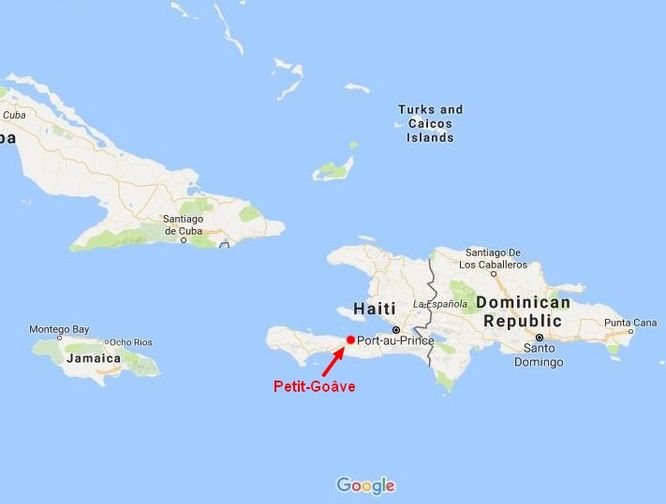
|
This was during
King William’s War (1688-1697), when France was at war with England
and its colonies. In early July 1693, one of these French privateer ships from Petit-Goâve
was sailing northward, along the coast of North America.
|
|
C'était pendant la
guerre de la Ligue d'Augsbourg (1688-1697) lorsque la France était en guerre
contre l'Angleterre et ses colonies. Au début juillet 1693, un de ces
navires corsaires français de Petit-Goâve
naviguait vers le nord, le long de la côte Nord-Est des États-Unis.
|
|
|
The French privateer was accompanied by an English brigantine, which the French captain
had captured off the coast of Pennsylvania. We do not yet know whether the brigantine
was captured in July 1693, or at an earlier time. The French captain had replaced
the English crew of the brigantine with French privateers, who took command of
the English brigantine.
|
|
Le corsaire français était accompagné d'un brigantin anglais, que le capitaine français
avait capturé au large de la côte de Pennsylvanie. Nous ne savons pas encore si le brigantin
a été capturé en juillet 1693, ou avant. Le capitaine français avait remplacé l'équipage
anglais du brigantin par des corsaires français qui prirent le commandement du
brigantin anglais.
|
|
|
In an English-language record of the time, the French privateer
was named "Trumpeose".
|
|
Selon un document d'archives en anglais,
le corsaire français se nommait "Trumpeose".
|
|
Source :
Click here in English - The National Archives, Kew, England ADM 51/3923 -
Captain’s Logbook, frigate Nonsuch
1693 - transcribed by Jan Bevan 2016
|
Considering that the letters "U" and
"O" were probably transposed,
it can be assumed that TRUMPEOSE
= TROMPEUSE
|
|
Considérant qu'il peut y avoir eu confusion entre les lettres "U" et "O",
on peut supposer que
TRUMPEOSE
= TROMPEUSE
|
|
|
Trompeuse ("Trickster") was a popular name for French ships.
|
|
Trompeuse était un nom courant pour les navires français. |
|
|
However, according to my researches, the privateer can not be
the French Royal Navy frigate Trompeuse (1689-1707,
90 tons, 12 guns), which was in charge of escorting the ships of the salt-tax
in the estuary of the river Loire at that time.
|
|
Toutefois, selon mes recherches, il ne peut pas s'agir de la Trompeuse
(1689-1707, 90 tonneaux, 12 canons), de la Marine Royale,
qui était chargée d'escorter les vaisseaux des gabelles dans l'estuaire de la Loire
à cette époque.
|
|
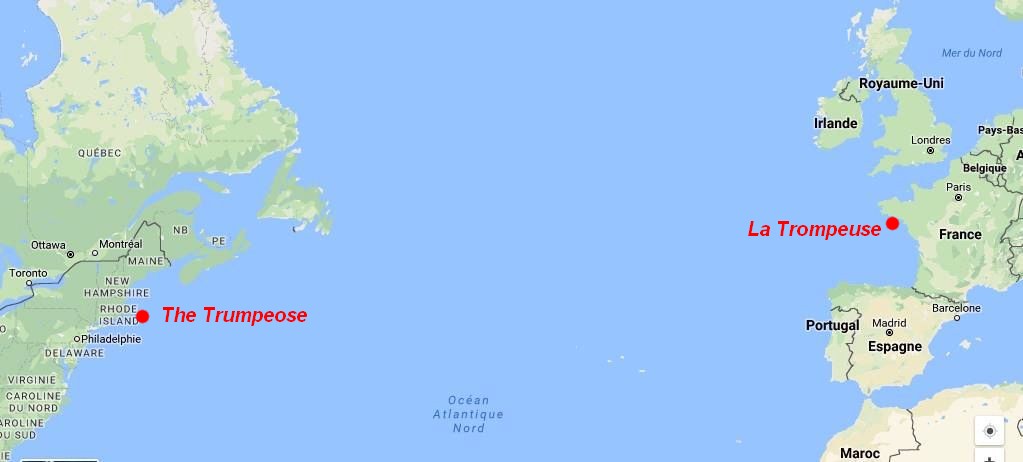
|
During my research, I discovered that there is an island called
La Trompeuse
off the coasts of Haïti, near Petit-Goâve.
|
|
Au cours de mes recherches, j'ai découvert une ile nommée
la Trompeuse
au large des côtes d'Haïti, à proximité
de Petit-Goâve.
|
|
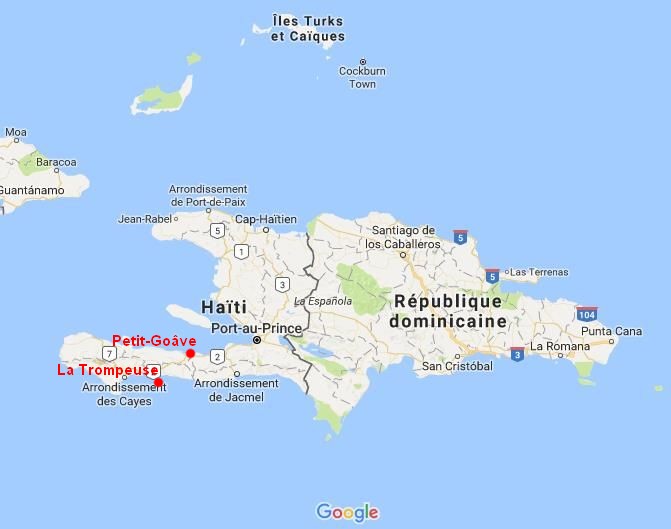
|
So far, the name of the English brigantine and
the name of the French captain
of the Trumpeose are unknown.
|
|
Jusqu'à présent, le nom du brigantin anglais et le nom
du capitaine français de la
Trumpeose
sont inconnus.
|
|
|
On July 8, 1693 (Old Style), the captain of the
Trumpeose,
sighting Block Island, off the coast of Rhode Island
in New England, decided to make an attack
in order to resupply. The French crew landed and slaughtered the livestock of
the English settlers, who had hidden in the woods.
|
|
Le 18 juillet 1693, le capitaine de la Trumpeose,
apercevant Block Island, au large de Rhode Island
en Nouvelle-Angleterre,
décida d'y faire une descente afin de se réapprovisionner. L'équipage
français a débarqué et abattu le bétail des colons anglais qui s'étaient
cachés dans les bois.
|
|
Source :
Click here in English - The National Archives, Kew, England ADM 51/3923 -
Captain’s Logbook, frigate Nonsuch
1693 - transcribed by Jan Bevan 2016
Source :
Click here in English - A Summary Historical Narrative of the Wars in New England -
by Samuel Niles
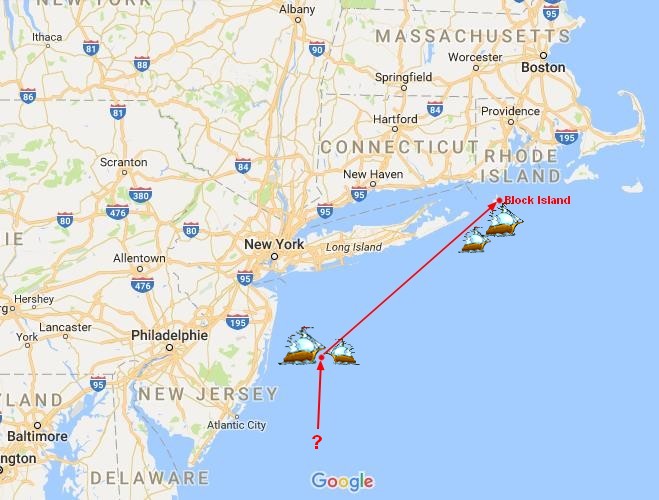
|
On July 9, 1693, in Block Island harbour (New Shoreham),
the French privateer, the Trumpeose,
of 16 guns, and its captured English brigantine
were surprised and chased by an English ship named the Nonsuch,
of 350 tons and 36 guns, commanded by captain Thomas Dobbins.
In their escape, in the fog, the Trumpeose and the brigantine
entered Buzzards Bay, a deep dead-end bay.
|
|
Le 19 juillet 1693, dans le port de Block Island (New Shoreham),
le navire corsaire français, la Trumpeose,
de 16 canons, et son brigantin anglais capturé furent
surpris et pourchassés par un navire anglais
nommé le Nonsuch, de 350 tonneaux et 36 canons,
commandé par le capitaine Thomas Dobbins. Dans leur fuite, dans le brouillard,
la Trumpeose et le brigantin se sont engagés dans Buzzards Bay qui est
une baie profonde et sans issue.
|
|
|
By the night of July 10, 1693 (Old Style), after two days of pursuit and cannon-fire,
the Trumpeose was land-locked in the confines of a cove of Buzzards Bay.
|
|
Dans la nuit du 20 juillet 1693, après deux jours de poursuite et une forte canonnade,
la Trumpeose fut piégée aux confins d'une crique de Buzzards Bay.
|
|
|
The captain of the Trumpeose landed the majority of his crew on Cape Cod.
Some may have been able to escape, but most
were captured by the local militia and escorted under guard to Boston.
The number of French prisoners-of-war varies in the different reports,
but may be as high as 150 men.
|
|
Le capitaine de la Trumpeose avait fait débarquer la majorité de son équipage
au Cape Cod. Certains purent s'enfuir mais les autres furent faits prisonniers par la milice
locale, puis conduits à Boston sous bonne garde.
Le nombre de prisonniers de guerre français varie dans les différents rapports,
mais peut atteindre 150 hommes.
|
|
Source :
Click here in English - Massachusetts Archives Collection Volume 30 Page 330a -
Transcribed by J. Bevan July 2014
Source :
Click here in English - Virginia, Colonial Williamsburg, MS46.02: William Blathwayt Papers.
William Phips Letter dated September 26, 1693
Source :
Click here in English - The National Archives, Kew, England ADM 106/30/96 –
Letter from Captain Dobbins to the Navy Office, London, 20 July 1693 –
transcribed by Jan Bevan 2017
|
On the morning of July 11, 1693 (Old Style) the French captain surrendered,
to captain Thomas Dobbins of the Nonsuch, both the
Trumpeose
and the brigantine. Both vessels were then escorted to Newport, Rhode Island, as "prizes".
|
|
Dans la matinée du 21 juillet 1693, le capitaine français
commandant la Trumpeose
et le brigantin, se rendit au capitaine Thomas Dobbins
commandant le Nonsuch. Les deux navires ont ensuite
été escortés à Newport, Rhode Island, en tant que prises de guerre.
|
|
|
There, after a negotiation of several days, of which we do not know the
details, captain Thomas Dobbins "delivered"
the Trumpeose
and the brigantine by order of the Governor of The Province of Massachusetts,
Sir William Phips, on July 19, 1693 (Old Style). |
|
Là, après une négociation de plusieurs jours dont nous ne connaissons pas
les détails,
le capitaine Thomas Dobbins remis
la Trumpeose et le brigantin aux autorités
anglaises sur ordre du gouverneur du Massachusetts, Sir William Phips, le 29 juillet 1693.
|
|
Source :
Click here in English - The National Archives, Kew, England ADM 51/3923 -
Captain’s Logbook, frigate Nonsuch,
1693 - transcribed by Jan Bevan 2016
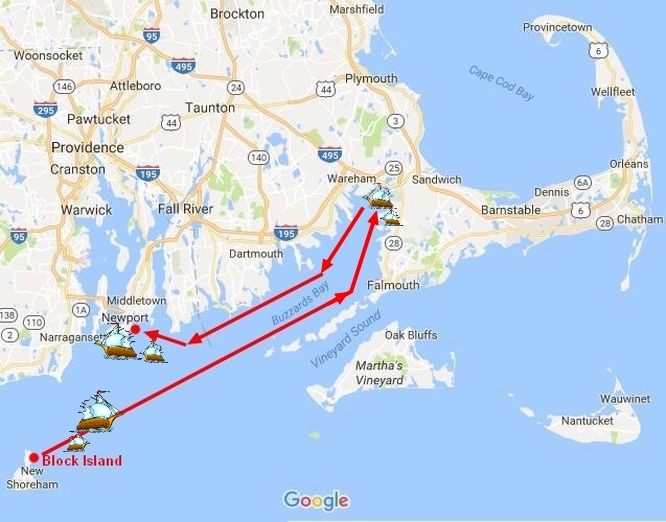
|
The following day, July 20, 1693 (Old Style), captain Thomas Dobbins wrote
a letter to the Navy Office in London,
in which he briefly reported the event. |
|
Le lendemain, 30 juillet 1693, le capitaine Thomas Dobbins a écrit
une lettre au Bureau de la Marine à Londres,
dans laquelle il a brièvement signalé l'évènement. |
|
Source :
Click here in English - The National Archives, Kew, England ADM 106/30/96 –
Letter from Captain Dobbins to the Navy Office, London, 20 July 1693 –
transcribed by Jan Bevan 2017
|
The French prisoners were brought to Boston by order of Governor William Phips,
and put on board the ships of the English fleet of Vice-Admiral Sir Francis Wheler,
to replace men lost to yellow fever.
A partial list of French prisoners’ names exists in the musters of Wheler’s ship,
the Resolution.
| |
Les prisonniers français furent conduits à Boston sur ordre du gouverneur William Phips
et placés à bord des vaisseaux de la flotte anglaise du vice-amiral Sir Francis Wheler
pour remplacer les hommes atteints de fièvre jaune.
Une liste partielle des noms des prisonniers français figure
dans les rôles du navire de Wheler, la Resolution.
|
|
Source:
Click here in English - Virginia, Colonial Williamsburg, MS46.02: William Blathwayt Papers.
William Phips Letter dated September 26, 1693
Source:
Click here in English - The National Archives, Kew, England ADM 36/2834 -1693 Ship’s
Musters of HMS Resolution - Transcribed by Jan Bevan 2016
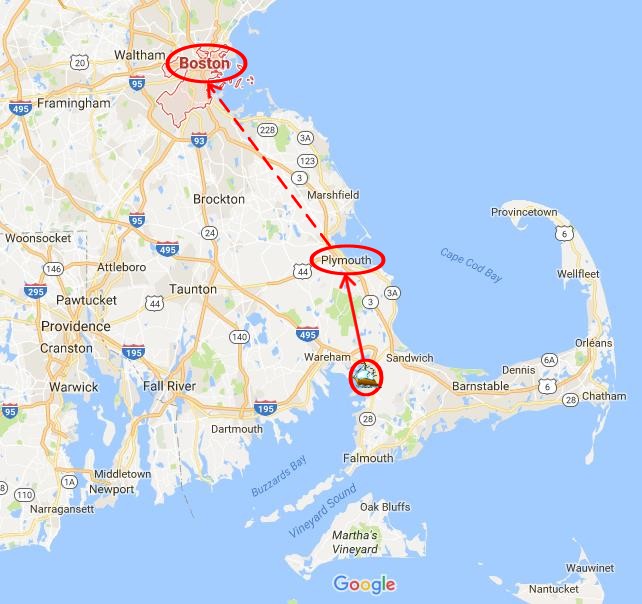
|
Later, Governor Sir William Phips apparently sold the captured French privateer
“Trumpeose”
for the amount of £900. So far, neither the name and nationality of the buyer,
nor the date of the transaction, is known.
|
|
Plus tard, le
gouverneur Sir William Phips a apparemment vendu le corsaire français
capturé "Trumpeose" pour un montant de 900 livres.
Jusqu'à présent, ni le nom ni la nationalité de
l'acheteur, ni la date de la transaction, ne sont connus
|
|
Source :
English -
The National Archives, Kew, England, CO 5/924, number 38, folio 117 -
Sir W Phips Accounts
|
Even during King William’s War, Governor Phips had dealings with the French at their colony
of Port Royal, Acadia (now Annapolis Royal, Nova Scotia, Canada). It is possible
that Phips sold the captured French ship Trumpeose
back to the French.
|
|
Malgré la guerre, le gouverneur Phips était en relation avec les
Français dans leur colonie de Port Royal, Acadie
(maintenant Annapolis Royal, Nouvelle-Écosse, Canada). Il est possible que
Phips ait revendu la Trumpeose
aux français.
|
|
SECOND PART
RECONCILING THE HISTORICAL DOCUMENTS
WITH THE LEGEND
|
|
SECONDE PARTIE
RAPPROCHEMENT DES DOCUMENTS D'ARCHIVES AVEC LA LÉGENDE
|
|
|
Various version of the Francis LeBaron story specify a French ship in
Buzzards Bay; the crew going ashore on Cape Cod and being captured; and the
French prisoners being sent to Boston.
|
|
Différentes versions de l'histoire de Francis LeBaron font référence à un
navire français dans Buzzards Bay; L'équipage va à terre au Cape Cod et est
capturé; Les prisonniers français envoyés à Boston. |
|
|
The main difference is that the Trumpeose was captured by the
Nonsuch in Buzzards Bay in July 1693 according to the
archival documents; whereas according to
the Goodwin legend it was the Aigle, of Bordeaux, which was wrecked in Buzzards Bay. |
|
La principale différence est que la Trumpeose fut capturée par le
Nonsuch dans Buzzards Bay en juillet 1693 selon les archives,
alors que selon la légende de Goodwin c'est l'Aigle, de Bordeaux,
qui fit naufrage dans Buzzards Bay.
|
|
|
In my opinion, when the French disembarked,
their longboat was left aground on the coast.
It was a longboat from the English brigantine
(which probably had the name Eagle,
before being renamed Aigle). The English settlers, unaware of the existence
of the events which had taken place at sea, supposed that it was
from the shipwreck of a French ship called the Aigle.
|
|
Selon moi, lors du débarquement des français,
une chaloupe s'est échouée sur la côte.
Il s'agissait d'une chaloupe du brigantin anglais
(qui portait probablement le nom de Eagle,
avant d'être renommée Aigle.)
Les colons anglais ignorant
l'existence des évènements qui s'étaient déroulés en mer ont supposé qu'il s'agissait
du naufrage d'un navire français nommé l'Aigle.
|
|
|
The possible discovery of the name of the brigantine
will allow us to confirm or to invalidate this hypothesis. |
|
L'éventuelle découverte du nom du brigantin
nous permettra de confirmer ou d'infirmer cette hypothèse.
|
|
|
As yet we have no documentary evidence that Francis LeBaron was on board either
the Trumpeose or the brigantine.
However, it seems highly probable that
Francis LeBaron landed from the
Trumpeose or the brigantine onto Cape Cod during the night of July 10 to 11,
1693 (Old Style).
Note: July 10-11, 1693 (Old Style) = July 20-21,
1693 in the modern calendar. |
|
Jusqu'à présent, nous n'avons aucune preuve historique que Francis LeBaron
était à bord de la Trumpeose ou du Brigantin.
Cependant, il est fort probable que Francis LeBaron débarqua de la
Trumpeose, ou du brigantin, au Cape Cod
dans la nuit du 20 au 21 juillet 1693.
Note: 20-21 juillet 1693, aujourd'hui = 10-11 juillet 1693 (Old Style).
|
|
Clue / Indice :
Click here in English - Dr. Francis LeBaron by Dr. Lemuel LeBaron, 1830.
Clue / Indice :
Click here in English - Extract from "The First of the LeBarons", John Abbot Goodwin, 1876.
Clue / Indice :
Click here in English - Collections of the Massachusetts Historical Society, Volume III of the Second Series,
page 190
|
All versions of the LeBaron story agree that, as a prisoner of war, Francis was
taken towards Boston. However, while passing through Plymouth, where there was no doctor,
the surgeon of the French privateer ship was asked to practice his medical skills
on one of the English settlers.
|
|
Toutes les versions s'accordent sur le fait que Francis LeBaron,
en tant que prisonnier de guerre, a été conduit vers Boston.
Cependant, en passant par Plymouth, où il n'y avait pas de médecin,
on demanda au chirurgien du navire corsaire français de pratiquer ses
connaissances médicales sur l'un des colons anglais.
|
|
|
Following his success, the Selectmen of Plymouth
apparently requested the Governor of Massachusetts to allow the French
surgeon to be freed, in order to serve as the doctor in Plymouth.
|
|
Suite à son succès, les conseillers municipaux de Plymouth
ont apparemment demandé au gouverneur du Massachusetts de rendre sa liberté
au chirurgien français afin de devenir le médecin de Plymouth.
|
|
|
In a history of Plymouth published in 1835, there is a list of
“Physicians in Plymouth”, which names “Francis Le Baron, from
1693 to 1704”.
|
|
Dans une histoire de Plymouth de 1835, il y a une liste
des "Médecins de Plymouth" comportant le
nom de «Francis Le Baron, de 1693 à 1704».
|
|
|
From documents starting in 1695, we can piece together the facts of Dr. Francis LeBaron’s
life in Plymouth, Massachusetts.
|
|
Grâce aux archives depuis 1695, nous pouvons reconstituer la vie
du Docteur Francis LeBaron à Plymouth, dans le Massachusetts. |
|
|
These historical documents include:
- his marriage in September 1695 to Mary Wilder;
- several land transactions;
- a few items in the Town Records;
- one brief mention in a court case;
- the births of three sons to Francis and Mary LeBaron (James in 1696, Lazarus in 1698,
and Francis in 1701);
- the probate of Francis’ will;
- an inventory of his possessions at date of death;
- and his bequest to the town of 90 acres of woodland, for the support of the poor.
|
|
Ces documents historiques comprennent:
- son mariage en septembre 1695 avec Mary Wilder,
- plusieurs transactions foncières,
- quelques pièces dans les archives de la ville,
- une brève mention dans un procès,
- les naissances de trois fils de Francis et Mary
LeBaron (James en 1696, Lazarus en 1698 et Francis en 1701),
- l'enregistrement du testament de Francis,
- l'inventaire de ses biens au jour de sa mort,
- et son legs à la ville de 90 acres de bois en faveur des pauvres.
|
|
|
The last piece of evidence is his gravestone in Plymouth,
Massachusetts, on which we may still read:
|
|
La dernière preuve est sa pierre tombale, à Plymouth,
Massachusetts, sur laquelle nous pouvons toujours lire:
|
|
|
HERE LYES Ye BODY
OF FRANCIS LEBARRAN
PHYTICIAN WHO
DEPARTED THIS LIFE
AUGst Ye 8. 1704.
IN Ye 36. YEAR
OF HIS AGE
|
Note: August 8, 1704
(Old Style) = August 19, 1704
|
|
|
CI-GÎT LE CORPS
DE FRANCIS LEBARRAN
MÉDECIN QUI
QUITTA CE MONDE
LE 8 AOUT 1704.
A L'AGE DE 36 ANS
|
Note: 8 aout 1704
(Old Style) = 19 aout 1704
|
|
|
Can anyone provide a copy of the Francis LeBaron story,
as told by Lazarus LeBaron III (1744-1827),
of Sutton, Massachusetts?
|
© copyright, Gérard ANGLADE, 1 chemin des Copeaux, 91100 Villabé, FRANCE
angladegg@bbox.fr
|







